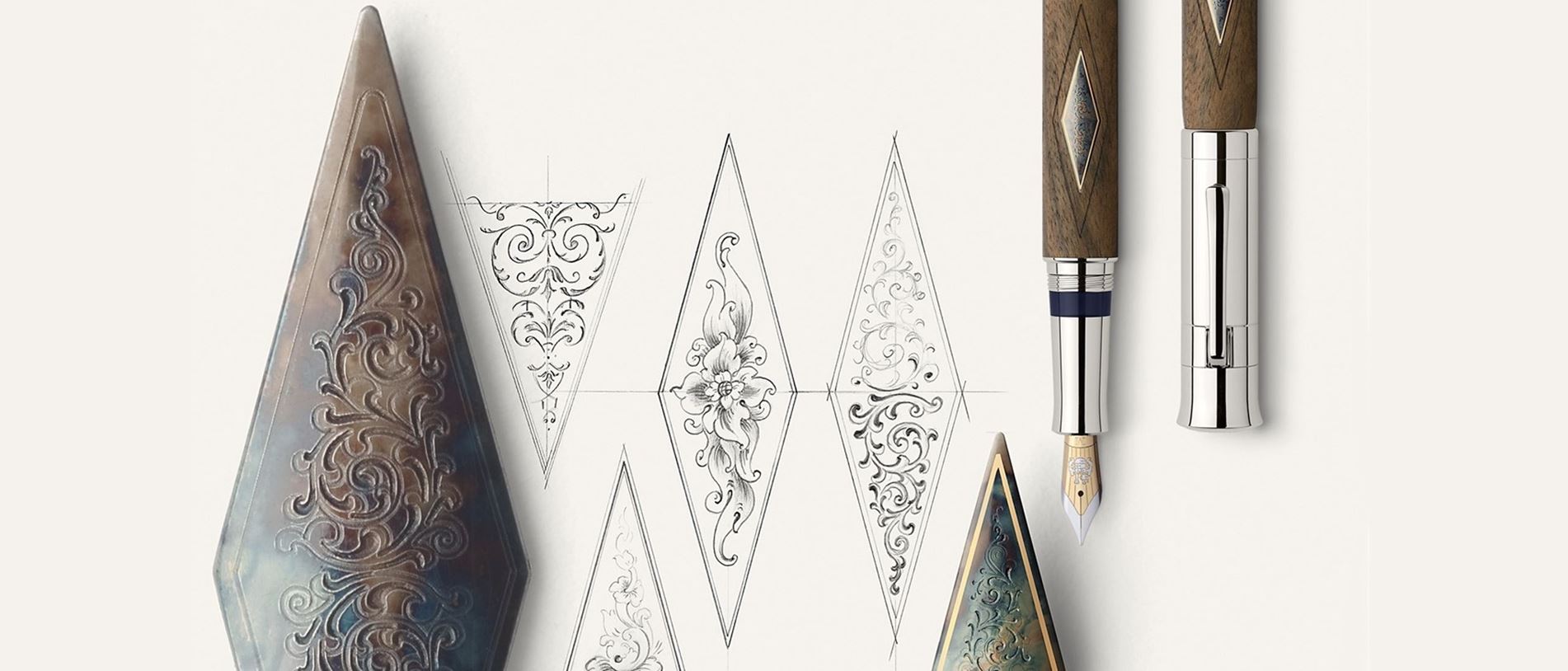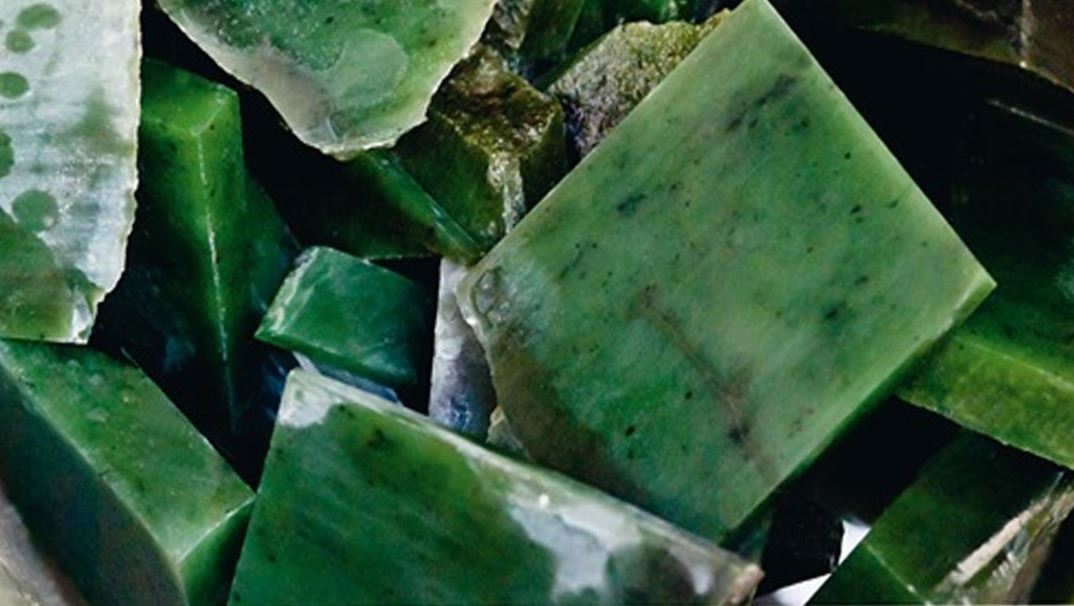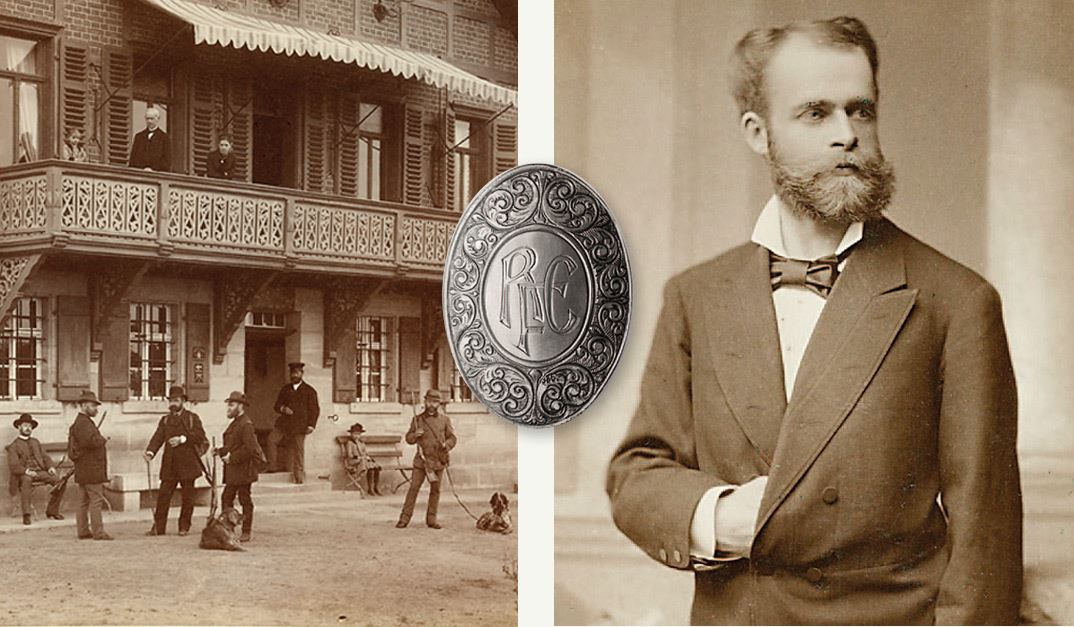
Tradition and Drive
The Dürrenhembach hunting lodge near Nuremberg was acquired by Lothar von Faber in 1867 for his son Wilhelm, a passionate huntsman. Lothar’s great-grandson Count Roland von Faber-Castell also shared that passion: the father of the present Count possessed considerable environmental awareness; he loved the woods and the forests, and conservation of wildlife was dear to his heart – an attitude that still runs in the family. The aesthetic appeal of some very valuable hand-crafted hunting rifles, owned by Count Roland, inspired the Pen of the Year 2010.

A secret Art with highly aesthetic Results
On seeing the pen one immediately notices the case-hardened metal parts and the fine engravings.
Until the late 19th century, case hardening was the sign of a high-quality gun, with the inimitable shimmering coloration it provides. For centuries, the technique was handed down by word of mouth and was something of a secret art.
The metal parts are usually packed in carbonized leather and heated to convert the surface into steel; the colours appear on cooling. Some 20 parameters contribute to the beautiful visual effect, including the thickness of the metal, the temperature, and the rate of cooling.
Until the late 19th century, case hardening was the sign of a high-quality gun, with the inimitable shimmering coloration it provides. For centuries, the technique was handed down by word of mouth and was something of a secret art.
The metal parts are usually packed in carbonized leather and heated to convert the surface into steel; the colours appear on cooling. Some 20 parameters contribute to the beautiful visual effect, including the thickness of the metal, the temperature, and the rate of cooling.
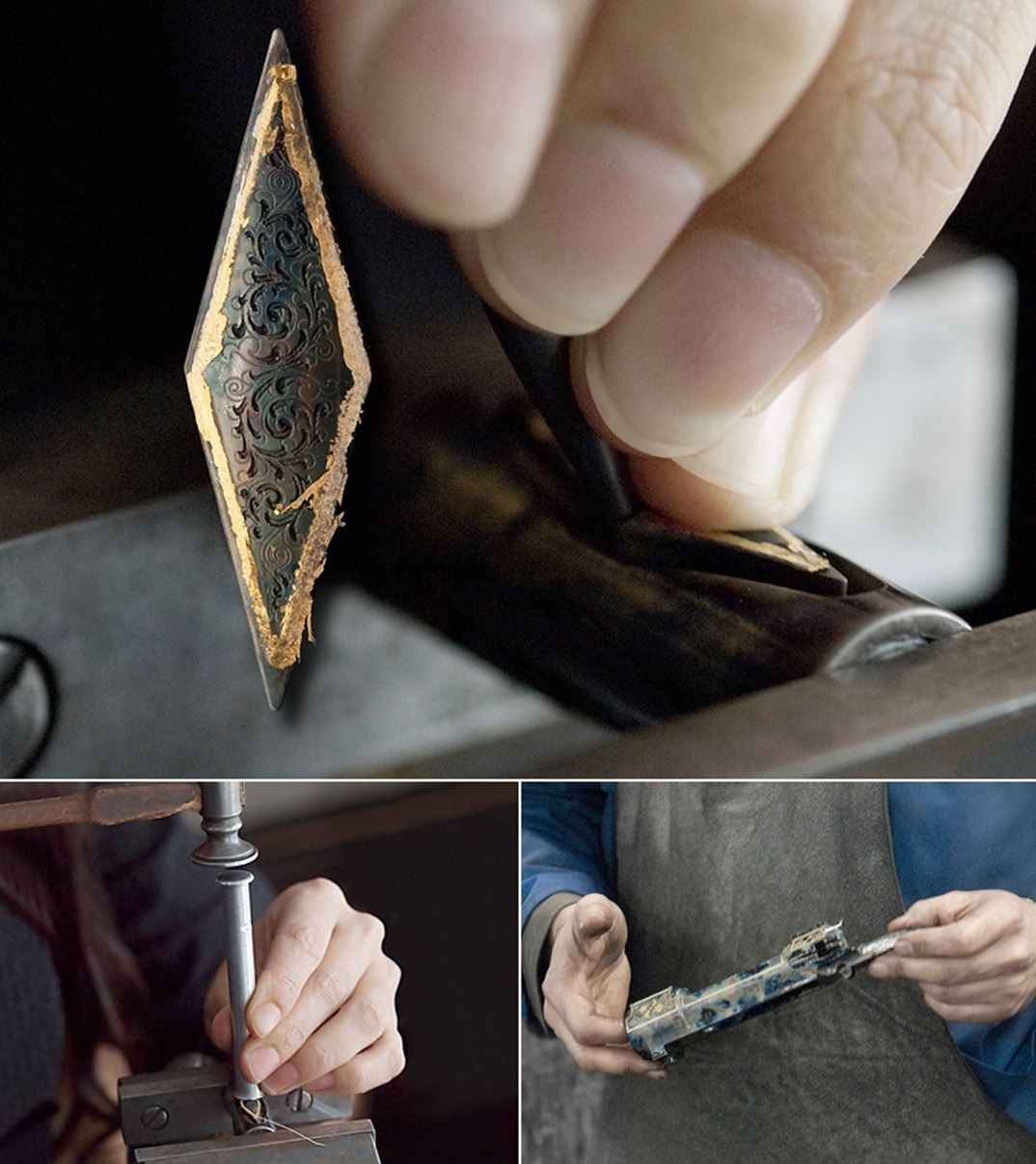
Geaming Nuances
With long experience a craftsman can influence the results but never predict them precisely, so no two case-hardened items are identical.
The effect is rounded off by elaborate gold damascene work. Nowadays there are only very few traditional workshops that can carry out these two ancient skills in the way that the Pen of the Year 2010 demonstrates.
Before the case hardening, the engraver cuts a groove with a dovetail cross-section, which the 24-carat gold inlay work is later set into and then polished. A perfect result requires great skill and precision.
The effect is rounded off by elaborate gold damascene work. Nowadays there are only very few traditional workshops that can carry out these two ancient skills in the way that the Pen of the Year 2010 demonstrates.
Before the case hardening, the engraver cuts a groove with a dovetail cross-section, which the 24-carat gold inlay work is later set into and then polished. A perfect result requires great skill and precision.
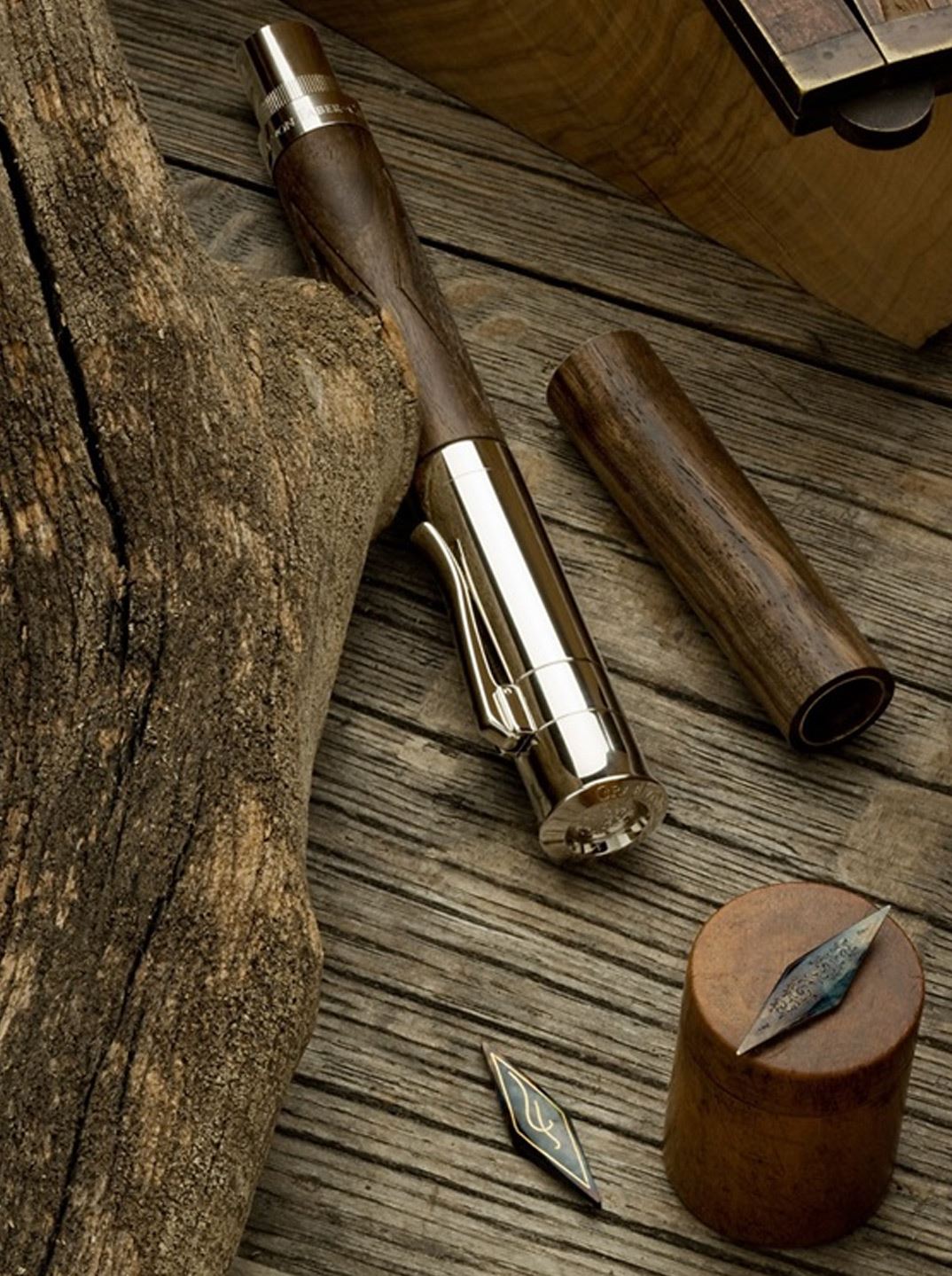
A coveted Wood
With long experience a craftsman can influence the results but never predict them precisely, so no two case-hardened items are identical.
The effect is rounded off by elaborate gold damascene work. Nowadays there are only very few traditional workshops that can carry out these two ancient skills in the way that the Pen of the Year 2010 demonstrates.
Before the case hardening, the engraver cuts a groove with a dovetail cross-section, which the 24-carat gold inlay work is later set into and then polished. A perfect result requires great skill and precision.
The effect is rounded off by elaborate gold damascene work. Nowadays there are only very few traditional workshops that can carry out these two ancient skills in the way that the Pen of the Year 2010 demonstrates.
Before the case hardening, the engraver cuts a groove with a dovetail cross-section, which the 24-carat gold inlay work is later set into and then polished. A perfect result requires great skill and precision.
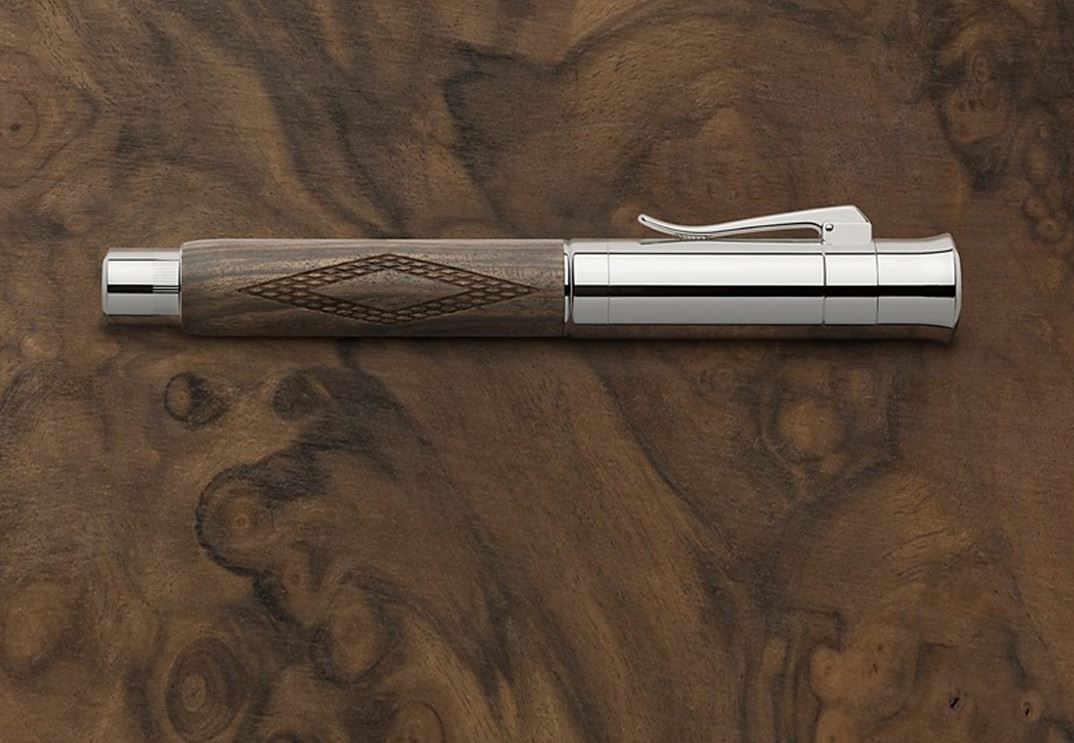
Caucasian Walnut Wood
The material of the barrel of the pen fully matches up to the claim of exclusivity: precious Caucasian walnut wood.
Stored for many years, walnut wood is tough and not particularly elastic yet it does not warp or splinter. It also better withstands compression and flexing forces than oak. In short, it is the ideal wood for the stock of a gun – and for very special writing implements. It possesses a beautiful figuring, with fine but marked patterns. The hand-carved ‘fish scales’ pattern rounds off the overall impression of the barrel.
It possesses a beautiful figuring, with fine but marked patterns. The hand-carved ‘fish scales’ pattern rounds off the overall impression of the barrel.
Stored for many years, walnut wood is tough and not particularly elastic yet it does not warp or splinter. It also better withstands compression and flexing forces than oak. In short, it is the ideal wood for the stock of a gun – and for very special writing implements. It possesses a beautiful figuring, with fine but marked patterns. The hand-carved ‘fish scales’ pattern rounds off the overall impression of the barrel.
It possesses a beautiful figuring, with fine but marked patterns. The hand-carved ‘fish scales’ pattern rounds off the overall impression of the barrel.
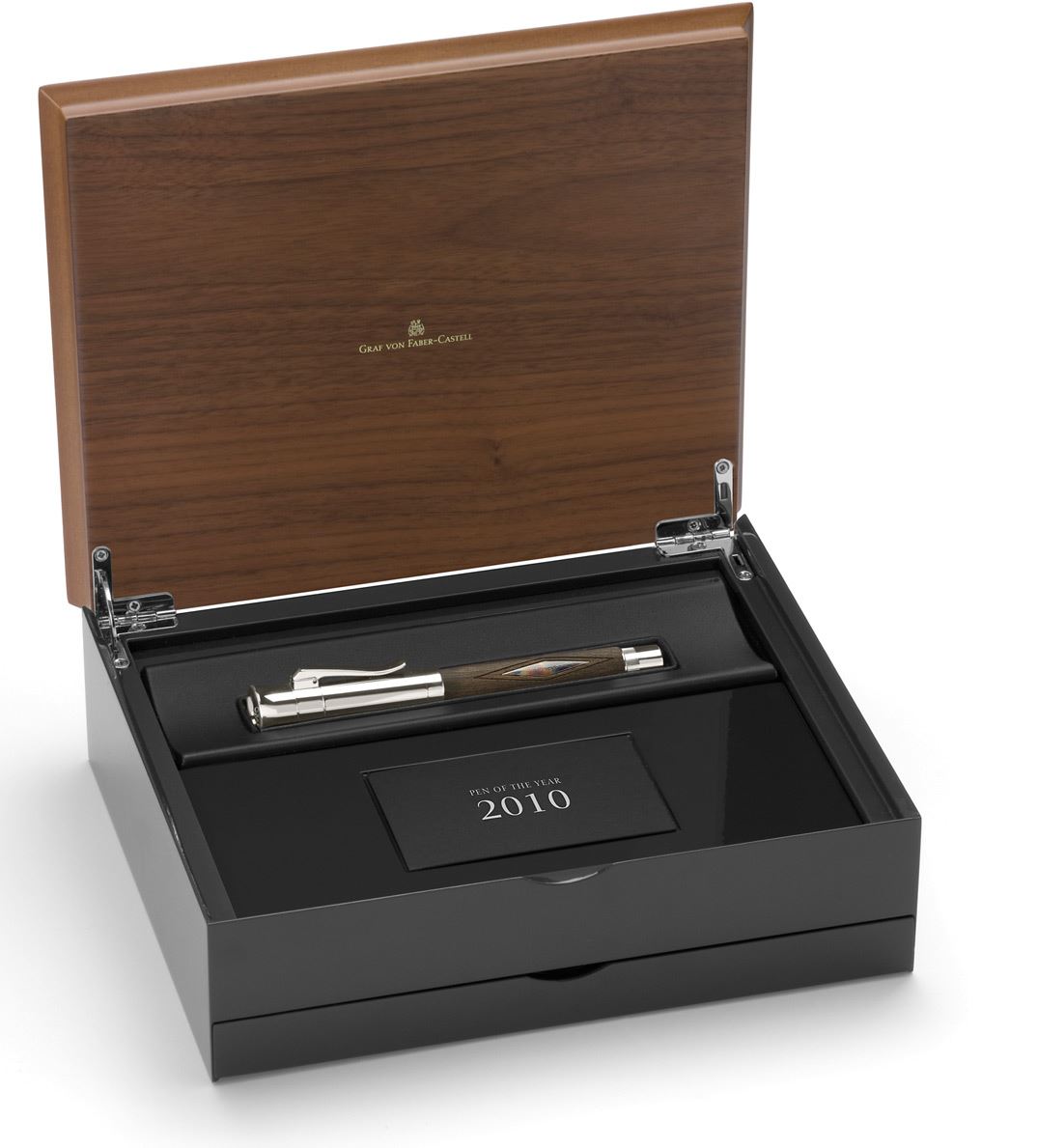
High Quality Presentation
Each pen is individually numbered and comes in a unique wooden case with a beautiful brochure and a certificate. The case has a lid made of walnut veneer.
A certificate testifies that the pen with its 24-carat gold inlays is one of a limited edition.
A certificate testifies that the pen with its 24-carat gold inlays is one of a limited edition.
